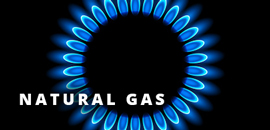PROGRESS REPORT
Midwestern State University (MSU) provided an energy management master plan to the Legislative Budget Board (LBB) in November 2012 in compliance with Executive Order RP-49 and updated the plan in a submission to the LBB in October 2017. An update on recommendations from the 2017 report are as follows:
- The renovation of Bolin Hall is proceeding and includes upgrades to modern codes and standards including the building envelop, new HVAC controls systems instead of pneumatics, modern air handlers and LED lighting throughout. Construction began in December 2023 and will be completed in the fall of 2025.
- Continuing efforts to replace compact fluorescent bulbs with LEDs when they burn out or as opportunities and funding allows it:
- Pierce Hall: Upgraded 72 fluorescent fixtures to LEDs on the first floor and 33 on the second floor.
- Clark Student Center: Central Plant: Upgraded 45 fluorescent fixtures to LEDs in offices and 129 HID high bay fixtures were upgraded to LEDs in the dining area.
- Fain Fine Arts: Replaced fluorescent fixtures in classrooms B114 and B120 with LEDs.
- Hardin Administration: Provost's office had 32 fluorescent fixtures upgraded to LEDs.
- Akin Auditorium in Hardin: Replaced two spot lights and 24 dimming system lights with LEDs.
- D.L. Ligon: Another 35 percent of the fluorescent recessed fixtures in the football locker room were upgraded to LEDs, such that 53 percent of the space has LEDs
- Sikes Lake Center: Replaced 54 fluorescent fixtures with LEDs.
- West Campus Annex: Corridor fixtures (14) and two kitchen fixtures were upgraded to LEDs.
- Purchasing Warehouse: All high bay HID fixtures were upgraded to LED lamps.
- Monument Signs: Twelve of the HID fixtures were converted to LEDs.
- Pedestrian walk east of Hardin: Replaced 11 of the HID pole lights with LEDs.
- A significant effort to begin replacing fluorescent bulbs in campus buildings was initiated in fiscal 2021 and has continued through fiscal 2023. The fourth and final phase of converting Moffett Library to all LED fixtures was completed with the last 87 fluorescent fixtures changed to LEDs ($19,000). Completed the replacement of 75 more fixtures in the Fain Fine Arts building studio 105, 18 fixtures in C106 and 57 in other rooms ($33,000).
- A leaky steam joint in the tunnels (tunnel A, Hardin spur) was replaced to reduce steam losses ($4,200).
- While not directly related to saving energy but critical to providing air conditioning to most campus building, 58 percent of MSU's Higher Education Funds (HEF) were directed toward maintenance of campus utility systems including $393,000 of repairs to recoat the bottom of two of our cooling towers, $28,000 to replace two of our six 1960s era condenser water pumps, and $159,000 in chiller repairs.
- MSU's chilled water system is sized to allow for campus expansion. However, the steam system is considered undersized such that additional buildings cannot be added to its loop. The last two campus buildings MSU constructed, Legacy and Centennial, have their own dedicated boilers instead of using steam from the Central Plant because of its lack of capacity. In 2021, the Legislature provided funds to evaluate the campus steam load requirements and add energy efficient boilers in the Central Plant so new buildings can be heated with the existing tunnel loop instead of installing individual boilers in new structures. The funds became available in August 2022 to proceed with the design effort which was completed in October 2023. Construction began to replace a 1960s vintage boiler in April 2024 with a more energy efficient and larger unit. This new boiler is currently being commissioned so it is ready for operational use in November 2024.
Energy usage results are as follows:
From fiscal 2023 to fiscal 2024, MSU observed a 0.3 percent decrease in electricity usage, a 3.4 percent decrease in gas usage and a 5.6 percent increase in water usage. The slight decrease in electricity usage is attributed to a reduction in on-campus students and enrollment, and our large science building, Bolin Hall, was partially closed for renovation work in December 2023. The fiscal 2023 water consumption was typical when compared to usage from fiscal 2019, 2020 and 2023. In fiscal 2023, compared to fiscal 2018, MSU observed a 4.6 percent increase in electricity usage, a 2.1 percent increase in gas usage and a 15.1 percent increase in water usage. The increase is attributable to a 6 percent increase in campus square footage during that same period.
GOALS
For water, transportation fuels and natural gas, our goal is 1 percent per year with a benchmark of fiscal 2018 and a target of fiscal 2024. For electricity, our goal is 1 percent per year with a benchmark of fiscal 2020 and a target of fiscal 2024.
| Utility | Target Year | Benchmark Year | Percentage Goal |
|---|---|---|---|
| Water | 2024 | 2018 | 1 |
| Electricity | 2024 | 2020 | 1 |
| Transportation Fuels | 2024 | 2018 | 1 |
| Natural Gas | 2024 | 2018 | 1 |
STRATEGY FOR ACHIEVING GOALS
MSU has been active in pursuing energy reduction technologies and procedures for more than 15 years, including a SECO loan in 2011 to save gas and electrical energy and the replacement of natural grass athletic fields with artificial turf in 2015 to reduce water consumption.
In the fall of 2019, and in response to Health and Safety Code Section 388.005C passed by the 86th Legislature, MSU updated the energy master plan which was included in the fiscal 2020 submission. The consulting firm that developed the 2019 energy master plan determined the only financially feasible option for saving energy was to pursue LED light retrofitting (reference Pages 4 and 5 of the master plan) at a cost of $4.1 million. By retrofitting all campus lighting with LEDs, it is anticipated energy savings of 5.1 percent could be achieved. However, funding limitations restrict MSU's ability to invest $590,000 per year necessary to realize the 5.1 percent savings at the end of seven years. Instead, MSU continues to invest around $50,000 to $100,000 per year for the foreseeable future to retrofit lighting.
MSU continually seeks opportunities for energy efficient and reduction. In December 2020, MSU requested an energy usage report from Ameresco. Ameresco suggested LED lighting retrofits, upgrades to plumbing fixtures to low-flow technology, additional insulation for steam pipes, variable speed pumping for heating water hot water pumps, upgrades to fume hoods and fans for energy conservation, rehabilitation of cooling towers, replacement of an older boiler, and replacement of air handlers in two buildings (Hardin, Bolin) at a total of almost $9 million with a 20-year payback. Unfortunately, the payback period was unusually long and not reasonable. MSU continues to pursue LED retrofits at a more economical price with planned investments of approximately $100,000 per year. MSU did address its aging concrete cooling tower in fiscal 2024 and replaced a 1960s vintage boiler in the Central Plant.
The Legislature has provided funding for MSU to upgrade the utility systems in Bolin Hall as part of a $43 million renovation project. Design work began in December 2022, construction in December 2023 and completion is expected in the fall of 2025. A significant part of the project's scope is to upgrade, replace and retro-commission the existing mechanical, electrical and plumbing building systems in order to gain energy efficiencies, as well as to comply with the current building codes. This will include replacement of the pneumatic control system with Andover digital controls, replacement and retrofit of air handling equipment, replacement of exhaust fans and fume hoods, upgrade of electrical switch gear, and a new temperature control system for the greenhouse.
While the overarching university goal is to reduce utility costs by 1 percent per year, economic opportunities to achieve this goal are limited due to progress to date which has reduced potential project options to install more energy efficient systems with reasonable paybacks. The university still pursues cost effective options whenever available.
IMPLEMENTATION SCHEDULE
MSU will continue efforts of retrofitting fluorescent fixtures in Fain Fine Arts in studios 106, 109 and 111. Portions of other buildings will be converted to LED lighting each year until fully upgraded, although it will take years to complete given the available budget for such expenditures. The Bolin Hall renovation design began in 2022 with construction ending in the fall of 2025. Upgrades to half the building's HVAC systems and electrical equipment will be completed by January 2025 and the other half by September 2025.
AGENCY FINANCE STRATEGY
The cost of the lighting retrofit project for fiscal 2025 is $50,300 and will be funded by the state HEF. In future years, $50,000 to $100,000 per year of lighting retrofit upgrades will be implemented and funded by the state HEF.
EMPLOYEE AWARENESS PLAN
A new lighting control system with motion sensors will be installed as part of the Bolin Renovation Project, as well as an updated HVAC control system which should increase efficiency of the heating and cooling equipment. Modern fume hoods whose extraction air volume changes with the sash height will also be installed in Bolin.






